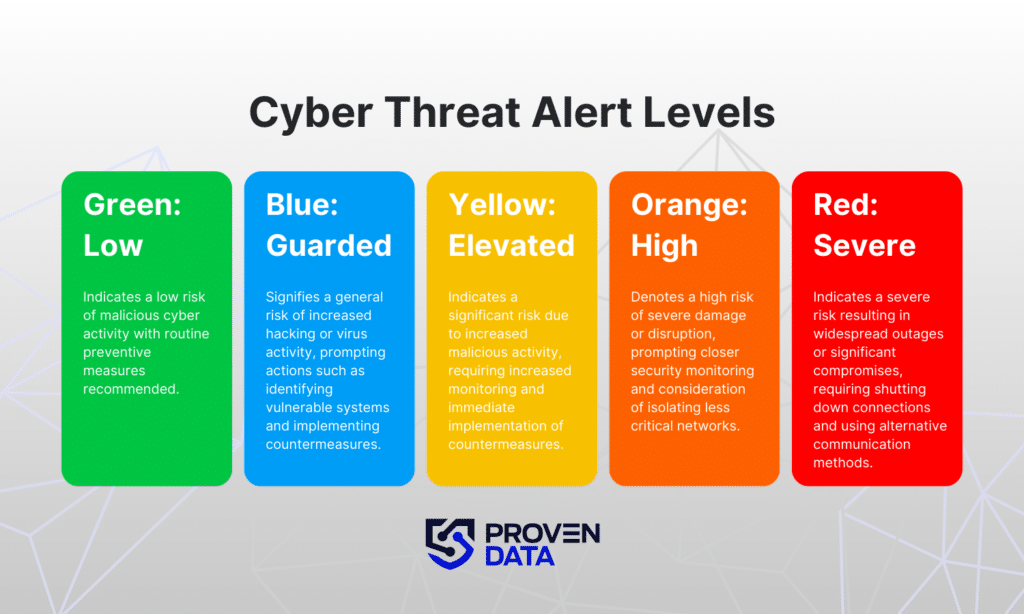Cyber threat levels are indicators that assess the severity of malicious cyber activity and its potential impact. From Low to Severe, these levels help users gauge the situation’s urgency and tailor their response accordingly.
By monitoring threat-level updates from reputable sources, users can stay ahead of emerging threats and take preemptive action to mitigate risks. This proactive approach can significantly reduce the likelihood of falling victim to cyberattacks and minimize the potential impact on personal and organizational data.
For instance, if the threat level is elevated or high, users may strengthen their security measures, such as updating software, implementing stronger passwords, and increasing vigilance against phishing attempts. Conversely, during periods of low threat levels, users can remain vigilant but may not need to implement as stringent security measures.
What are the five cyber threat alert levels
By standardizing threat level indicators, these entities can effectively communicate the severity of cyber threats and coordinate response efforts. This ensures that resources are allocated appropriately and timely action is taken to address emerging cybersecurity challenges.

1. Low: Green
The Green level indicates a low risk of malicious cyber activity. There are no unusual activities beyond the normal concern for known hacking activities or viruses.
Under the Green alert, users should continue routine preventive measures, including applying vendor security patches and updating anti-virus software regularly.
2. Guarded: Blue
The blue threat level indicates a general risk of increased hacking, viruses, or malicious activity. While potential risk exists for malicious cyber activities, no known exploits have been identified, and no significant impacts have been observed.
This alert level starts when professionals discover critical vulnerabilities without reported exploits or credible warnings of increased probes or scans.
Cybersecurity entities, such as CIS, recommend that users identify vulnerable systems, implement appropriate countermeasures, and regularly apply patches and updates.
It’s critical to follow cybersecurity organizations’ websites for notifications about new cyber threats.
3. Elevated: Yellow
The Yellow alert cyber threat level indicates a significant risk due to increased hacking, viruses, or other malicious activity that compromises systems or diminishes service.
Known vulnerabilities may be exploited with moderate damage or disruption, or the potential for significant damage or disruption is high.
This level alerts about known threats that exploit critical vulnerabilities with moderate impact and compromise secure systems containing sensitive information.
Under it, users should increase monitoring of critical systems, implement immediate countermeasures, and prioritize patching and updates.
4. High: Orange
The Orange cyber threat alert level indicates a high risk of increased hacking, viruses, or other malicious cyber activity targeting or compromising core infrastructure. This level may cause multiple service outages, system compromises, or critical infrastructure compromises.
Users should closely monitor security mechanisms, limit network connections, and implement immediate countermeasures.
5. Severe: Red
The Red cyber threat level indicates a severe risk of hacking, viruses, or malicious activity resulting in widespread outages or significantly destructive compromises. Vulnerabilities are exploited with severe or widespread damage to critical infrastructure assets.
These threats lead to complete network failures and compromise of critical supervisory control and data acquisition (SCADA) systems.
The notification to cybersecurity organizations and members is given when the alert level is raised to Red.







